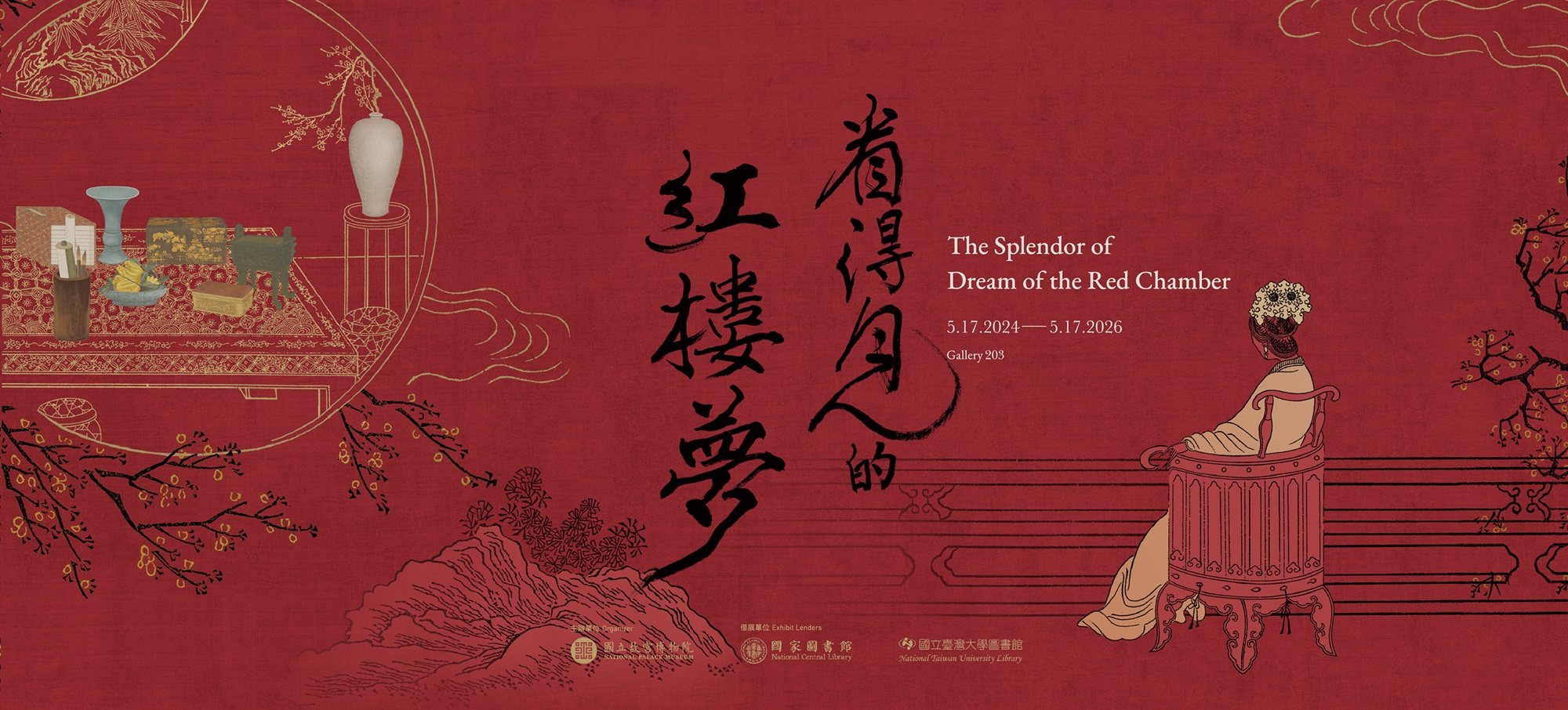The Exotic Novelty
Dream of the Red Chamber was written in the 18th century, a time when the East-West exchange and globalized trade was flourishing. During this period, Western missionaries made their way to China, bringing along novel objects from across the sea. Such objects were known as “yang huo,” where “yang” means “foreign.” These exotic novelties include snuff boxes, transparent glass bottles and pocket watches. Their popularity grew in the imperial palace and reached the Cao family, which had close ties with the imperial court. Such influence spread beyond the Cao family and was eventually captured in Cao’s depiction of the Jia family. Additionally, lacquer ware from Japan, called “yang qi (foreign lacquer ware)” in the novel, are among the tasteful elements adorning the décor of the Jia estate.
-
The Brilliance of Aventurine – Glass Speckled with Golden Stars
Copper Rectangular Snuff Box with Aventurine-glass Inlay
Europe
18th Century
Gu Tong 2468
Length 8.2 cm Height 2.8 cmAventurine is a French term meaning a yellow brown gemstone containing gold-colored particles. The term is also extended to describe “artificial aventurine, or glass and ceramics imitating aventurine.” According to the Archives of the Workshops of the Imperial Household during the Qianlong reign, aventurine is synonymous with gold-speckled glass. The majority of this gold-speckled glass was imported from Europe, and some was produced in the imperial glass workshop. Such objects were seen as rare jewels at the time, and naturally, Cao Xueqin included them in his novel, revealing his own and the Jia family’s chicness and prestige.
Qingwen is Jia Baoyu’s preferred maid. In Chapter 52, Qingwen had a fever, headache and stuffy nose. Jia Baoyu specifically sent over a “small flat gold box with double clasp and gold-speckled glass inlay” and let Qingwen sniff the substance within, the “Wangqia imported tobacco,” meaning the snuff. Snuff was quite precious and susceptible to moisture damage. Hence, it was mostly stored in a tightly sealed box and bottle. After Qingwen sniffed the snuff she scooped out with her fingernail, “Suddenly, a sense of pungency rushed to the top of her skull. She sneezed five or six times, tearing and sniveling at the same time.” The detailed account faithfully captures the effect of snuff in clearing one’s nasal congestion.
-
The Vessels of Time – Pocket Watches and Clocks
Pocket Watch with Figures in Painted Enamel and Gemstone Inlay
Europe
18th Century
Gu Za 1067
Diameter 4.5 cmA pocket watch is a tangible capsule of the intangible time, a way of capturing the passing hours. Clocks and watches represent scientific and metallurgical achievements of Europe; they are also status symbols. When foreign missionaries and envoys presented them to the imperial court, they quickly became the favorites of Chinese emperors and aristocrats. These novelties led to the birth of the imperial clock workshop; they also influenced design trends from the imperial palace to the entire country. So prevalent was the trend that in the novel, even the entourage of Wang Xifeng carries watches and clocks, and Jia Baoyu carries with him a “walnut-sized golden watch.”
This pocket watch is like a magnetic stage with intricately designed gears underneath; delicate hour and minute hands above. The entire stage is adorned with dazzling gemstones, agate and an elaborately painted enamel panel depicting the moment when Venus disarms Cupid by taking away his golden bow. As strangers to the Greek mythology, the figures painted on the pocket watches seemed unthinkable to the people of the Qing dynasty. Perhaps it was this lack of understanding that sparked curiosity and intrigue about such objects.
-
The Lacquer of Japan – Maki-e Lacquerware
Maki-e Lacquer Drawer with Chrysanthemum Motif and Mother-of-pearl Inlay
Japan
18th Century
Gu Qi 403
Length 22 cm Height 10.7 cm“Yang qi (foreign lacquer)” refers to lacquerwares imported from Japan during the Qing dynasty, the equivalent of the modern-day “maki-e.” They are usually applied with layer upon layer of black or monochromatic lacquer, and decorated with powdered or painted gold, or gold leaf. Among the yang qi wares mentioned in Dream of the Red Chamber are “a small plum blossom-shaped yang qi table, a yang qi shelf and a yang qi tea tray.” Placed on the table are a three-piece altar set and a lady gu vessel from the Ru kiln; hanging from the shelf is a white jade flatfish qing; on the tray are tea cups. The gold appears luxurious against the understated black, which presents the objects above or within in the most sophisticated and striking light.
Maki-e lacquerwares had been favored by the literati in the Jiangnan area during the late Ming dynasty for their classic elegance, exquisite beauty and lightweight quality. Such keen interests influenced the imperial court, aristocrats and literati during the Qing dynasty. In addition to the black-and-gold maki-e decoration, some are inlaid with mother-of-pearl, which is responsible for the pearlescent purple glowing in the midst of the chrysanthemums, foliage and fences juxtaposed across the surface of this box.




